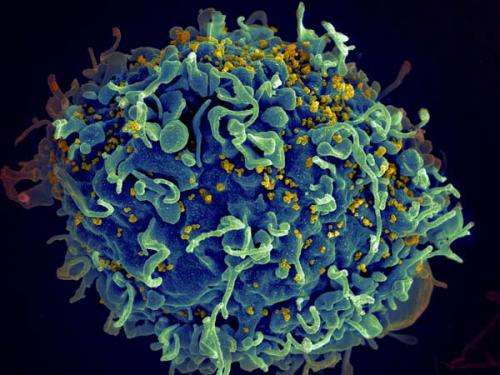New study has important implications for the design of a protective HIV vaccine

A PhD student from the University of the Witwatersrand today, 12 October 2015, published a study in the prestigious journal, Nature Medicine, describing how the changing viral swarm in an HIV infected person can drive the generation of antibodies able to neutralize HIV strains from across the world. The study has important implications for the design of a protective HIV vaccine.
Jinal Bhiman, a PhD student in the Faculty of Health Sciences is the lead author of the study, titled: Viral variants that initiate and drive maturation of V1V2-directed HIV-1 broadly neutralizing antibodies.
The development of a vaccine remains the best possibility for ending the HIV pandemic. However, the researchers say that a major challenge has been the inability to stimulate broadly neutralizing antibodies that are able to deal with the enormous variability of HIV.
While some infected people are naturally able to make broadly neutralizing antibodies, these antibodies often have unusual features, and generally need to go through an extensive maturation process in order to acquire breadth. Studying these rare people to understand how such antibodies develop provides a roadmap for vaccine strategies.
Through a variety of "high tech" approaches, including the isolation of monoclonal antibodies from single B cells and ultra-deep sequencing of shifting viral populations over more than three years of infection, the researchers studied one woman who developed potent broadly neutralizing antibodies.
The team, led by Professors Penny Moore and Lynn Morris, was able to look back in time to identify the unique virus that bound the precursors of what would become broadly neutralizing antibodies, beginning the immune pathway to breadth.
"The study also showed how these early antibodies matured to become broadly neutralizing. As the HIV-swarm struggled to evade these potent early antibodies, it toggled through many mutations in its surface protein. This exposed the maturing antibodies to a diverse range of viruses within this single infected woman," the researchers say.
"Antibodies exposed to this high level of viral diversity in turn mutated to be able to tolerate variation, thus acquiring the ability to neutralize diverse global viruses."
These findings provide insights for the design of vaccines that can "kick-start" and then shape the maturation of broadly neutralizing antibodies in HIV uninfected individuals, to provide protection from HIV exposure.
More information: Viral variants that initiate and drive maturation of V1V2-directed HIV-1 broadly neutralizing antibodies, Nature Medicine (2015) DOI: 10.1038/nm.3963


















